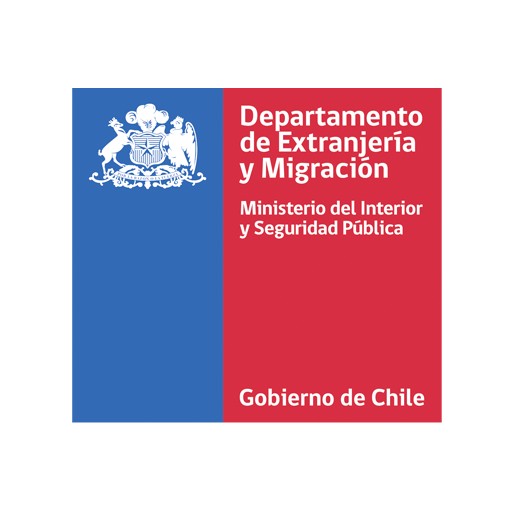The Immigration Department chose Microsoft over the competition to roll out digital citizen services. Thanks to Azure, the agency developed a web portal that receives over 45 thousand visits per day and processes over 2 million applications each year.
Chile’s Immigration Department is the government agency in charge of managing and issuing legal documents for foreigners. The migrant population in Chile has grown by about 350% over the last 3 years, from an estimated 416 thousand migrants in 2014 to 1.4 million at present. This increase results in service backups due to the number of people requiring immigration assistance and the need for a digital transformation process to provide better service to migrants. “We didn’t have the capacity to respond to the flow of people. There were lines of people up to 18 blocks long at our headquarters; the model was old for this new reality,» says Matías Améstica, Head of Digitization and Modernization Advisor for the Immigration Department. «We wanted to overcome a challenge: with the same resources, we wanted to significantly streamline processes and response times,» he shares.
With the onset of the Covid-19 pandemic in mid-March of last year, in-person customer service for foreign nationals needed to change. There was an urgent need to further accelerate the adoption of technology. To continue providing quality service and respond to migrants’ needs, Chile’s Immigration Department conducted a preliminary study. It studied the technological resources it previously had as compared to those offered by Microsoft technologies—and those of its competitors. This is how the agency finally opted for Azure, and it initiated several roll-outs involving different solutions. «With the help of user-oriented platforms, a virtual service model is implemented, delivering automated, real-time responses,» Améstica adds.
Electronic visa management from home…in only two minutes
Many of the Chilean government’s digitization processes are on a platform called SIMPLE, developed by the Digital Government Division. This platform helps each branch of government in Chile to build virtual environments for citizen services in an organized, replicable way. This facilitates the work for IT teams, translating into a uniform and robust virtual experience for citizens.
Even so, it should be noted that when SIMPLE was created, the rollout took place on a cloud platform of a Microsoft competitor. Why then, when the Immigration Department has the opportunity to replicate the SIMPLE model for its immigration services, would it choose the Microsoft cloud and its Azure App Service solution? Oscar Riquelme, Head of Modernization Projects, gives us the answer: “We went with Microsoft because of their incomparable support teams, and they’re there for us 24/7.”
The results speak for themselves. With the shift to Microsoft Azure, the Immigration Department modernized its infrastructure and gained flexibility while carrying out its processes. With the help of Azure App Service, a fully managed web hosting service, the department developed an official website to carry out the vast majority of immigration processes online. The 65 thousand monthly requests received by the department are now processed digitally. Migrants now manage the process online in a short time from the comfort of their own home: «Today, the processing of a stamped visa is completed in two minutes on our website. That used to take two months”, indicated the Department’s Head of Digitization. He added, “It’s possible to quickly implement and manage different procedures with Azure”.
To enable the service, the agency managed to standardize the virtual machines it had on the previous platform and transferred the database with different types of documentation sent by foreigners. The department relied upon Storage Accounts and Virtual Machines to transfer files from the cloud, provided to Azure by Microsoft’s competitor. Oscar Riquelme affirms: “We’re talking about a service that received at least 45 thousand site visits per day; thousands of people interact with the platform each month, which allows foreigners to normalize their immigration status—from submitting an application to obtaining an immigration permit.”

Shifting to the cloud has also enabled the configuration of microservices that feed the main platform, providing it with information about individuals who are or are not eligible prior to their entry into the platform. Riquelme explains: «We have several satellite projects (fine payment, electronic stamps, permanent residence certificates); we have a service that identifies which person has obtained which type of visa. Azure has been key to this, allowing us to deliver an efficient, digital service that doesn’t require the immigrant to be physically present. 35% of our transactions are now automatic. We want to reach 80%”.
Riquelme adds: “Azure gave us more administrative tools when it came to using cloud resources. For example, we’ve been able to send out applications automatically with Docker, as well as manage containers and virtual machines; we’re continuously discovering new features and adding new services. The computing, the scaling, everything is automatic and independent, without the direct involvement of our IT team.»
For his part, Matías Améstica, the Immigration Department’s Chief Digitization Officer, specified that the Azure Infrastructure is a flexible and secure environment. With Azure Database for MySQL, the cloud database service, the agency relies on Microsoft for automated operating system maintenance to keep service secure and up to date. This frees up time for the technical team to focus on other projects, such as developing new applications that can offer new services, or optimizing existing ones.
This work has proved to be extremely fruitful. According to Améstica, Chile is the first Latin American country to implement electronic visa management through a web portal. «With Azure’s infrastructure, we were able to deliver permanent residence certificates, calculate fines virtually, and deliver digital stamps without users having to visit the immigration offices.” Azure has made it possible to shape processes and offer a flexible, cost-effective payment model. This ultimately translates into the optimization of the Immigration Department’s services.
The success was such that new government agencies in Chile became interested in rolling out their digital projects on Azure, choosing Microsoft solutions over those of the competition.
Azure guarantees security and modernization
The infrastructure provided by Azure allows the Immigration Department to modernize and digitize all its processes, doing away with physical paperwork and reducing lines of people waiting to be served in the offices. All this generated data is stored with guaranteed security in the Microsoft cloud. Azure also allows the Chilean government to pay only for the cloud resources it consumes and, at the same time, to increase the availability of resources only when citizen demand warrants it. With Azure, increasing intake is as easy as a couple of clicks.
The Immigration Department’s Head of Digitization explained that more than 20 documents are stored for each immigration application; in a year, more than 310 thousand applications are processed. By digitizing this type of procedure, the large amount of data generated is protected by Azure’s services. «For us as an institution, the number of documents that come through digitally is important. Documentation on a machine is risky and expensive, and the fact that we can re-encapsulate those documents with Azure tools gives us security, gives us backup. And we can easily access the platform,» explains Améstica.
Before the Immigration Department’s modernization and digitization, users waited for email notification to start the process of managing paperwork. They then had to wait in line to be served at one of the offices. With Microsoft technology, now you only have to log on to the department’s web portal to obtain your visa, in printed form, within minutes.
One of the challenges for the future of the government organization is to continue digitizing all processes. «There’s still a lot of internal work to be done, especially to speed up the analyses; this is what we’ll be concentrating on for the next few years. We’re seeing the initial benefits of having gone through a digital transformation. We want to respond quickly to foreigners through our platforms and, ultimately, improve the lives of migrants,» concluded Matías Améstica.
«For us as an institution, the number of documents that come through digitally is important. Documentation on a machine is risky and expensive, and the fact that we can re-encapsulate those documents with Azure tools gives us security, gives us backup. And we can easily access the platform.”
- Matías Améstica: Head of Digitization and Modernization Advisor
- Immigration Department
“There is still a lot of internal work, precisely to speed up the analysis, we are going to focus on this in the coming years. We want to give a quick response to foreigners through our platforms. We are seeing the first benefits of having gone through a digital transformation, from now on we continue in a period of growth and improvement of analysis. Likewise, we want to promote everything that has to do with computer security. Ultimately, we want to show our products and improve the lives of migrants.”
- Matías Améstica: Head of Digitization and Modernization Advisor
- Immigration Department




